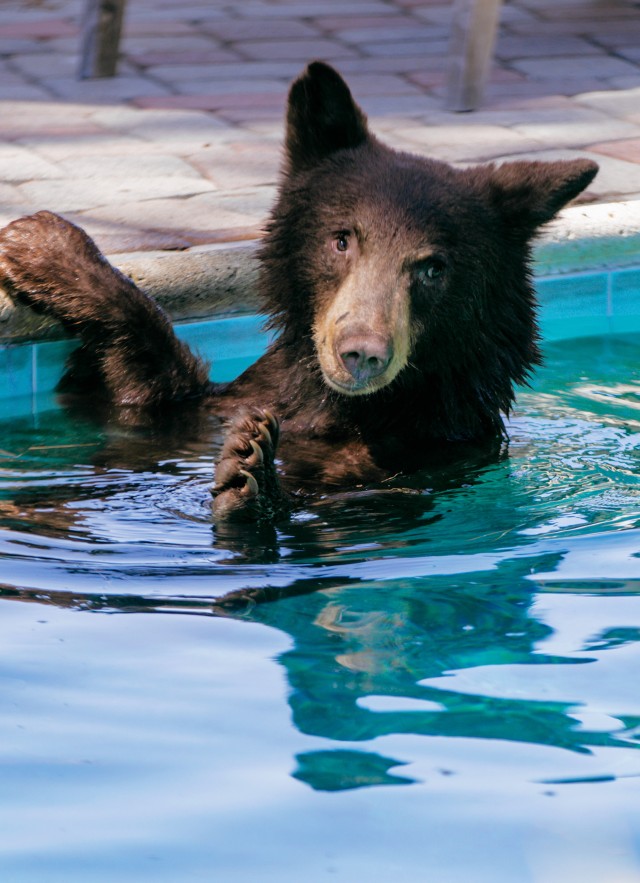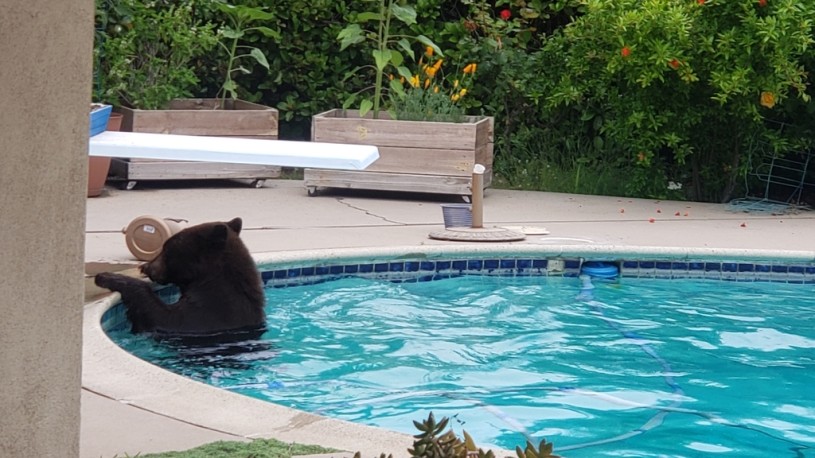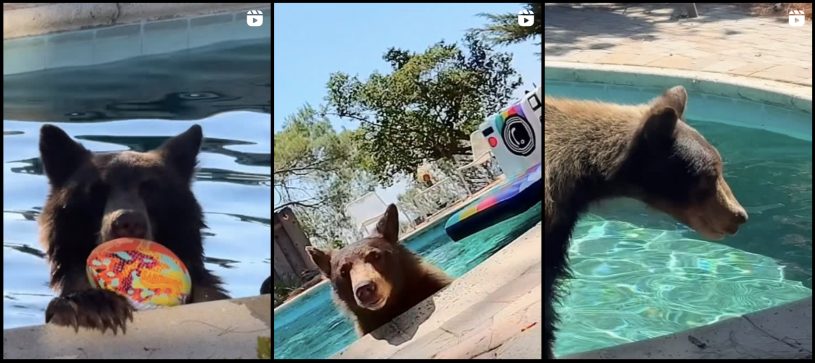Sun’s Out, Bears Out!
We’re diving into the curious phenomenon of bears in pools with our bear experts and local observers to learn what to do when encountering a vibey bear in your backyard.

WHY DO BEARS LOVE POOLS?
It’s the heat. Local black bears—Ursus americanus californiensis—are hitting up pools as SoCal heatwaves extend beyond the summer season. According to NHMLAC Associate Curator of Mammology, Kayce Bell, this isn't a seasonal summer behavior. It just depends on the weather.
“They are looking to cool off.”
- Associate Curator of Mammalogy, Kayce Bell.
Black bear populations are growing and they need space to wander and roam on hot days. “It is estimated that there are more black bears than all other species of bear combined,” says Bell. Black bears are also in closer proximity to humans due to development encroaching on the areas where they typically live. Some of those areas include foothill communities like Arcadia, where @migsy snapped this winning photo of a bear soaking in her backyard pool.

“The bear left a few minutes after the photo was taken. They daintily lifted themselves out of the pool and then climbed over the nearby fence to our neighbor's yard.”
- @migsy, via iNaturalist.
Bears in our backyards are likely around for a good time, not a long time. According to Bell, “The bear will probably leave on its own after a short period of time…you can just let it be.” Wildlife experts would like to know where and when this is happening; you can report a bear interaction to the California Department of Fish and Wildlife here. It’s important to keep in mind that while local agencies do collar and relocate wildlife for tracking and conservation purposes, relocation is not always a solution. Bears almost always return to the area they were removed from! Besides pools, other niceties associated with humans, like gardens, human food, and garbage are potential sustenance for bears—attracting them to residential areas. One professional tip: concerned residents can use pool covers as an added measure to deter bears from returning to their pools.
WHAT SHOULD I DO IF I SEE A BEAR CHILLING IN MY POOL?
Whether you own a backyard pool (hey, friend!) or live somewhere close to bear sightings, Bell suggests you observe the following recommendations from BearWise should you come into contact:
- From a safe distance, make loud noises, shout, or bang pots and pans together to scare away the bear.
- When the bear leaves, remove potential attractants such as garbage, bird seed, or pet food.
- Talk to your neighbors about removing attractants.
AFTER (POOL) PARTY
“We tend to see a lot of bears and often hear our customers talking about them seeing bears in their swimming pools!”
- David Murphy, owner of Puck Pool Service in San Marino, CA.
You may be wondering if finding a bear in your pool’s deep end is cause for pawse. We reached out to pool maintenance professionals in the area to learn their process. This is nothing new for David Murphy, who services pools in the Sierra Madre and Arcadia areas. “The chlorine level (residual) will be a couple of points lower than what we're used to seeing. Another tell-tale is a lot of fluff in the skimmer basket. Not leaves—bear fur!” Some of the corrective actions taken to clean a pool after a bear visit includes spiking the chlorine level, adding some oxidizer and more frequent filter cleaning schedules. It’s an increasingly common occurrence as residents continue sharing bear sightings with Murphy via their home security devices.

Remember: a bear in your pool may make for a cute video, but it’s a sign that your property could be attracting wildlife. To prevent repeat visits, secure trash, remove food sources, and check your yard before letting out your dog. You should let bears enjoy their moment in the spotlight—from a safe distance—and save your cannonball for another day. Encounters like these remind us that as urban areas expand into natural habitats, coexistence requires curiosity, caution, and a strong dose of chlorine afterward.